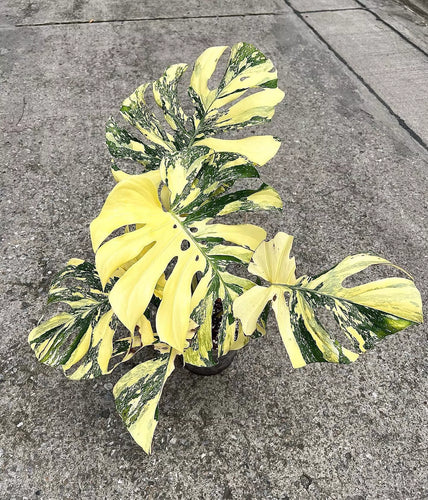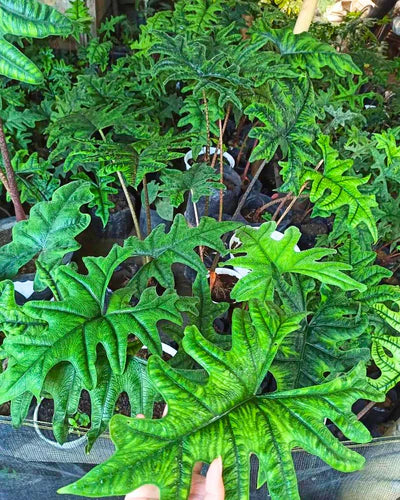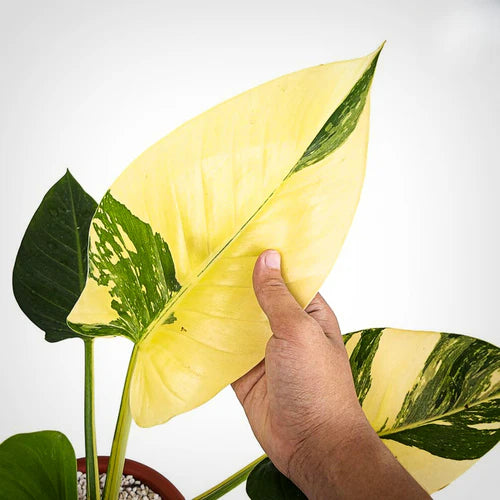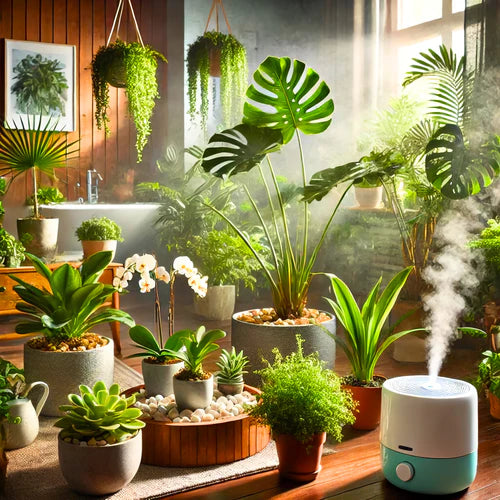How do you care for variegated Hindu rope?
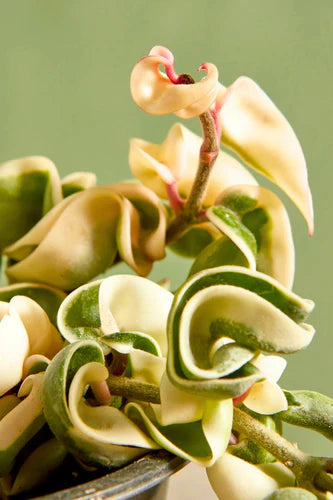
Table of Contents
- Introduction to Variegated Hindu Rope
- What is Variegated Indian Rope Hoya?
- Optimal Growing Conditions for Variegated Hindu Rope
- Light Requirements
- Watering Needs
- Ideal Humidity and Temperature
- Soil and Repotting Tips
- Fertilization Strategies
- Pruning and Maintenance
- Troubleshooting Common Issues
- Propagation Techniques
- Styling and Display Ideas
- Environmental Benefits and Uses
- Exploring the Hoya Collection at Plant Vault
- Purchasing Variegated Hindu Rope: Tips and Recommendations
- Conclusion
- FAQ on Variegated Hindu Rope Care
Introduction to Variegated Hindu Rope
The Variegated Hindu Rope (Hoya carnosa 'Compacta Variegata'), known for its twisted, waxy leaves and stunning variegation, stands out as a unique and captivating houseplant. This guide delves into the comprehensive care and growth requirements of this exotic hoya variety, ensuring it thrives in your home or garden setting.
What is Variegated Indian Rope Hoya?
Variegated Indian Rope, a striking variant of the Hoya Hindu Rope, features leaves with creamy white and pink streaks alongside the standard green, adding a splash of color and intrigue. This plant is not just a visual treat but also a conversation starter due to its peculiar rope-like leaf formations and variegation patterns.
How do you care for variegated Hindu rope? Care Guide:
Light Requirements
Variegated Hindu Rope plants thrive in bright, indirect light. They can tolerate some morning sun but should be protected from harsh afternoon rays to prevent leaf burn. A north-facing window or a spot with filtered light is ideal for maintaining the vibrant variegation.
Watering Needs
Watering the right amount is crucial; the soil should be allowed to dry out partially between waterings. Overwatering can lead to root rot, while under-watering can cause the leaves to pucker and dry. A balanced approach ensures the plant remains healthy and hydrated.
Ideal Humidity and Temperature
High humidity levels mimic the Variegated Hindu Rope's natural tropical environment, promoting lush growth and vibrant leaf color. Maintaining indoor humidity around 60% and temperatures between 60°F to 80°F will help this plant flourish.
Soil and Repotting Tips
Choose a well-draining potting mix ideally suited for epiphytic plants like hoyas. A mix of perlite, orchid bark, and peat is recommended. Repotting should be done every few years in spring to refresh the soil and accommodate root growth.
Fertilization Strategies
During the growing season (spring and summer), fertilizing your Variegated Hindu Rope with a balanced, water-soluble fertilizer once a month will support its growth. Reduce feeding in the fall and winter when plant growth naturally slows.
Pruning and Maintenance
Regular pruning helps maintain the plant’s shape and encourages denser growth. Remove any yellowing or dead leaves and trim back unruly vines to keep the plant looking tidy and healthy.
Troubleshooting Common Issues
Yellow leaves can indicate overwatering or poor drainage, while brown tips may suggest low humidity or drought stress. Regularly inspect for signs of pests like aphids or mealybugs, common adversaries of indoor plants.
Propagation Techniques
Propagate Variegated Hindu Rope by stem cuttings to share or expand your collection. Cut a section of stem with several leaves, let the cut end callous over for a day, and then plant in moist, well-draining soil.
Environmental Benefits and Uses
Beyond its beauty, the Variegated Hindu Rope purifies the air by removing toxins, enhancing indoor air quality and contributing to a healthier living environment.
Exploring the Hoya Collection at Plant VaultFor enthusiasts eager to explore more exotic varieties, Plant Vault's Hoya collection offers an extensive selection of rare and beautiful specimens, including the coveted Variegated Hindu Rope.
Purchasing Variegated Hindu Rope: Tips and Recommendations
When looking to add a Variegated Hindu Rope to your collection, ensure you purchase from reputable sources that offer healthy, well-cared-for plants. This ensures you get a plant that's not only beautiful but also ready to thrive under your care.
Conclusion
Caring for a Variegated Hindu Rope plant can be a rewarding experience, bringing both beauty and a touch of the tropics into your home. With the right care, this plant will be a stunning part of your indoor garden for years to come.
FAQ: Variegated Hindu Rope Plant Care
Here we address some frequently asked questions to help you better understand how to care for your Variegated Hindu Rope plant effectively.
Do Variegated Hindu Rope Plants Like to Be Root Bound?
Yes, Variegated Hindu Rope plants (Hoya carnosa 'Compacta Variegata') generally thrive when slightly root bound. This condition helps stimulate blooming. It's advisable to repot only when the roots substantially fill the pot, typically every few years.
Why Is My Variegated Hoya Hindu Rope Dying?
Several factors could contribute to your Variegated Hindu Rope plant's decline:
- Overwatering: The most common issue, leading to root rot. Ensure the plant is in well-draining soil, and allow the topsoil to dry out between waterings.
- Underwatering: If the leaves appear shriveled or dry, the plant might need more frequent watering.
- Lack of Light: Insufficient light can weaken the plant over time. Move it to a brighter location with indirect sunlight.
- Pest Infestations: Check for signs of pests like mealybugs or spider mites, which can stress the plant and lead to its decline.
Do Variegated Hindu Rope Hoyas Bloom?
Yes, Variegated Hindu Rope Hoyas can bloom, producing clusters of star-shaped, fragrant flowers. Blooms are more likely on mature plants that are slightly root-bound and have been properly cared for, particularly in terms of light exposure and watering. The flowering usually occurs during the warmer months when the plant is actively growing.
How Do You Get a Variegated Hindu Rope Plant to Bloom?
To encourage your Variegated Hindu Rope plant to bloom, provide it with bright, indirect light and slightly restrict its root space. Ensure it's mature enough, as younger plants may take a few years to start flowering. Additionally, maintain a consistent watering schedule without overwatering and provide a high-phosphorus fertilizer during the growing season to promote blooms.
Do variegated hoyas need more light?
Yes, variegated hoyas, including the Variegated Hindu Rope plant, generally need more light than their non-variegated counterparts. The variegation in the leaves means there is less chlorophyll, which the plant uses to convert light into energy. To compensate for this reduced chlorophyll, variegated hoyas require brighter, indirect light to thrive effectively. This ensures they can photosynthesize enough to sustain healthy growth and maintain their stunning variegation. However, it's important to avoid direct sunlight, which can scorch the leaves, especially the lighter, variegated areas.



